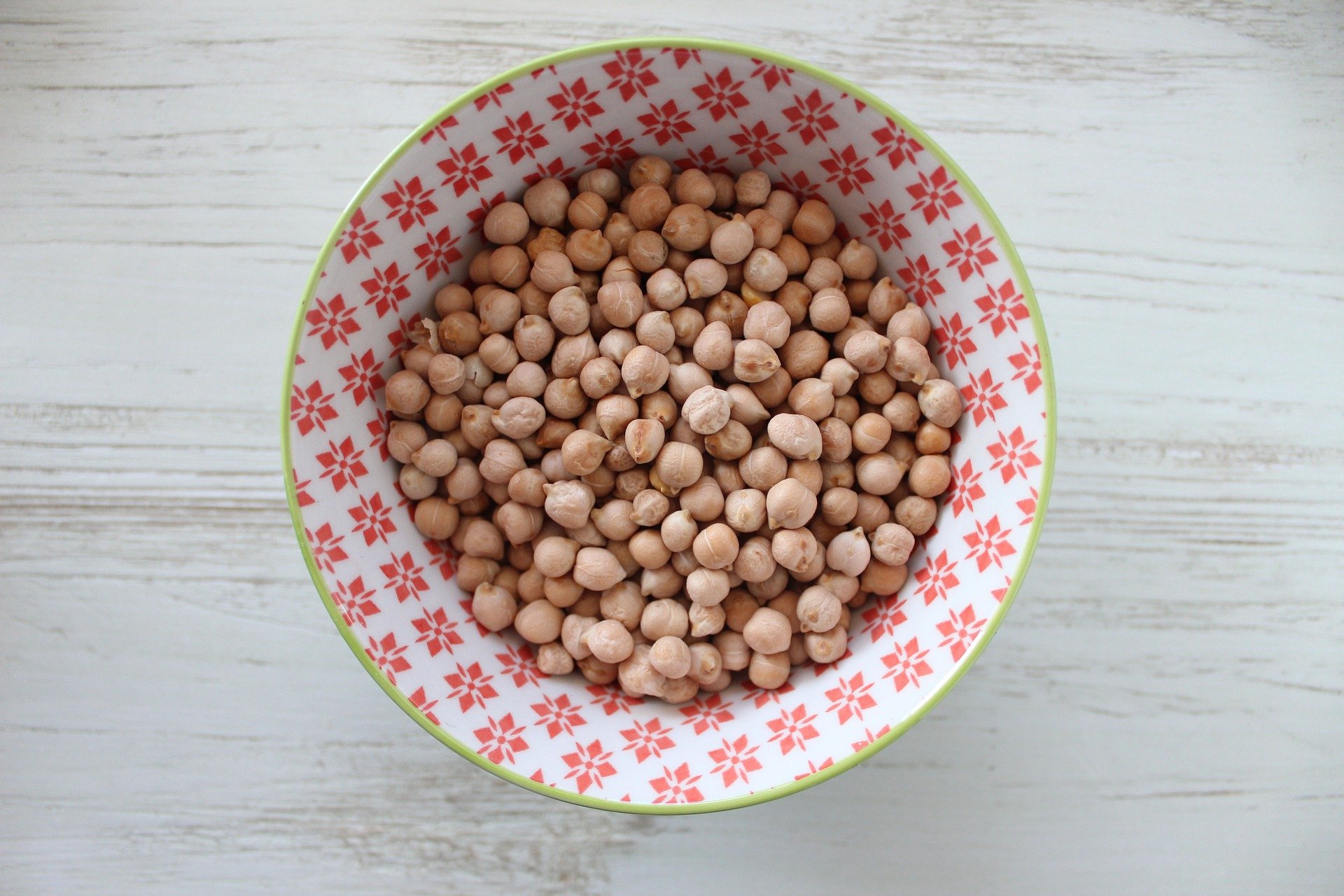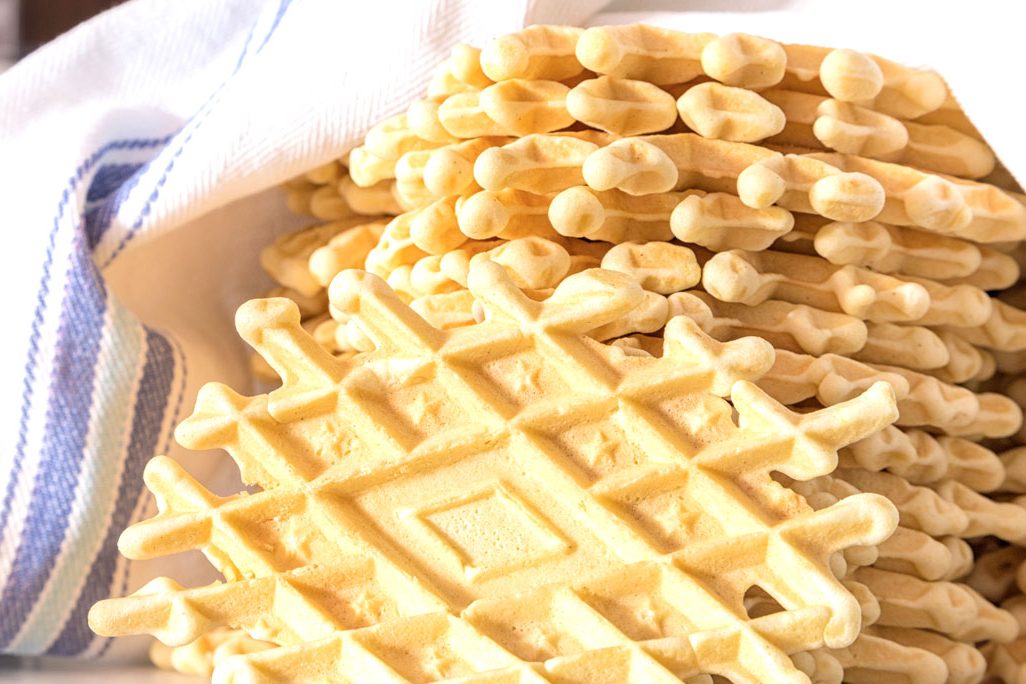I grew up calling these beans garbanzos. But they have several names, chickpeas and ceci among them. They are widely consumed in middle eastern countries and India and have long been a staple in Italian cuisine where they are served whole or pureed, and used in salads, soups, antipasti, fritters, farinata, main dishes and desserts.
They play almost no part in traditional American cuisine. But with today’s serious interest in regional Italian cuisine, ceci and recipes that call for them are appearing in magazines, newspaper food sections, on television and in restaurants all across the U.S. From little used to ubiquitous, ceci have come a long way.
Cicer arietinum (botanical name) are an ancient food. Their presence has been documented in the ancient world, from Jericho to Turkey to Greece and Rome. The Romans cultivated several varieties. Innkeepers, tavern owners and street vendors used them to make the simple cakes they sold to their patrons. Ceci were boiled and seasoned, and also formed the base for Roman soups and side dishes. From Apicius, ancient Rome’s famous culinary writer, comes a recipe for roasted chickpeas baked in olive oil and served with white wine, anchovy paste and pepper. These were eaten out of hand, like roasted nuts.
The beans themselves are actually pulses, the seed of a legume. They are available either in dried form or precooked and canned. I prefer dried ceci. When cooked they take on a light golden color and have a clean pure taste without any of the off or metallic notes or mealy texture so often encountered in their canned counterpart. I suggest using either variety well within one year of purchase. The dried beans can vary in quality and range in price from less than a dollar up to about $6.50 per pound. My favorite? La Valletta brand. These come from an Umbrian farm run by the brother and sister team of Alessandro and Rosalba Cappelletti. The two have devoted their energies to the sustainable production of grains and legumes native to the Colfiorito Plateau on the border of Umbria and Marche, and their products are of the highest caliber.
If using canned ceci, rinse them in a colander prior to adding them to the dish. Dried ceci must be soaked prior to cooking. For best results I recommend soaking for 20 to 24 hours during which time they will double in size and take on their characteristic yellow color. They must be boiled for about 1 1/2 hours, depending on their age. The cooking is often accomplished in two stages with a pre-cooking in clear water to soften the ceci and a final cooking in the dish or minestre.
It seems every family has its own recipe for many dishes, and the minestre Pasta e ceci is no exception. With a base of vegetable or chicken broth, a soffrito, ceci and pasta, it is versatile and simple soul satisfying fare, and a perfect way to introduce your family to the chickpea.
Pasta e ceci
serves 4 to 6
12 ounces dried chickpeas
1 stalk of celery with leaves, cut in 1/4 inch dice
1 carrot (optional), cut in 1/4 inch dice
1 small onion, minced
2 cloves of garlic, minced
1 6 inch sprig of rosemary
3-4 cups brodo di pollo
1/3 cup olive oil
1/4 teaspoon peperoncino
2 tablespoons chopped Italian parsley
salt and freshly ground black pepper
1/2 to 3/4 cup small pasta such as pennette, small elbows, or broken larger pasta
Rinse ceci beans and place in large bowl. Cover with 3 inches of cool water. Soak 24 hours, changing water once.
Drain and transfer ceci to 4 quart pot. Cover with 2 inches cool water. Bring to a boil. Decrease heat to simmer. Cook 45 to 60 minutes until beans begin to soften, skimming and discarding foam. Cooking time will depend on the age of the beans. Drain and set aside.
Pour olive oil into a low four quart pot. Add diced celery and leaves, optional carrot, minced onion and garlic and rosemary. Toss to coat with oil. Cover pot and sweat vegetables over low heat until softened, being careful not to let them color, about 12 minutes.
Add 3 cups brodo and drained ceci to pot. Bring to a boil. Decrease to a very mild simmer and cook, partially covered, about 40 minutes or until beans are tender and fully cooked. Remove 1/4 to 1 cup of soup and puree with immersion blender or in food processor. Return to pot, add pasta, peperoncino, 1 teaspoon kosher salt and a few twists of black pepper. Cook 10 minutes more or until pasta is done. If you want a bit more broth, add remaining broth 1/4 cup at a time. Remove and discard rosemary stem. Add chopped parsley, and check for seasoning. Serve.
La Valletta ceci are available from Gustiamo.com and other fine grocers.






























